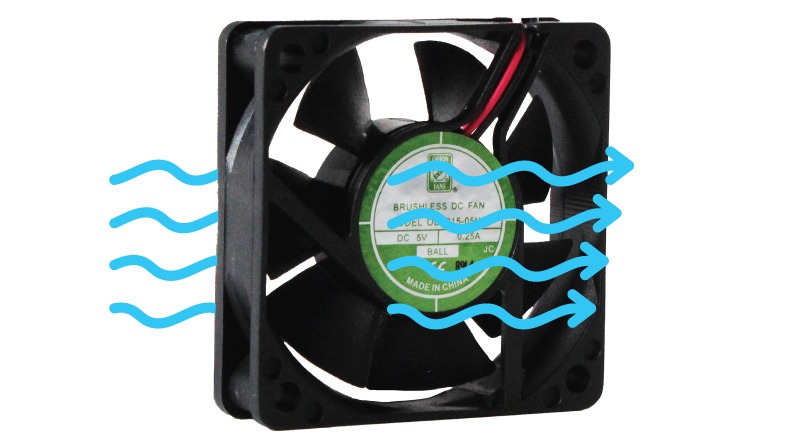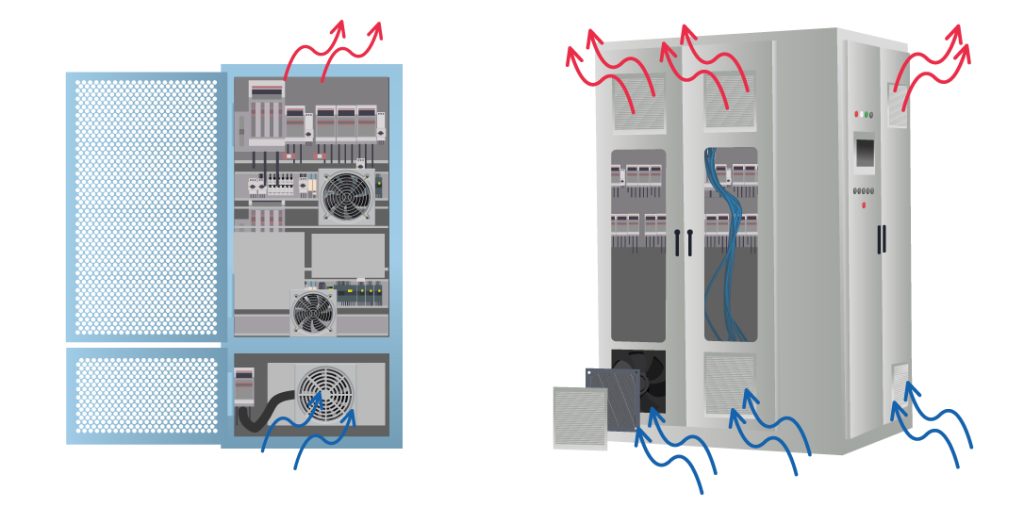It's the air, not the fan
It's the air, not the fan
Understanding Electronics Cooling
When you hear the whirring sound from an electronic device from a server, an audio amplifier, or a power supply, it’s natural to associate the fan with the cooling process itself. We often focus on the fan’s presence or speed as the primary cooling mechanism. However, this common perception overlooks the true hero of thermal management: the air that the fan moves. The fan is merely the tool; the air is the agent of cooling.

The Physics of Cooling: A Heat Transfer Primer
Cooling in all electronic devices is governed by a fundamental principle of physics: heat transfer. Heat naturally migrates from an area of higher temperature to an area of lower temperature. To prevent sensitive electronic components, like processors, transistors, or power regulators, from overheating and malfunctioning, the heat they generate must be efficiently dissipated into the cooler surrounding environment.

There are three primary modes of heat transfer:
Conduction: The transfer of heat through direct physical contact. This is how heat moves from a hot chip to a metal heat sink.
Convection: The transfer of heat through the movement of a fluid, such as air or liquid.
Radiation: The transfer of heat through electromagnetic waves.
In the vast majority of electronics that rely on fans, convection is the dominant method of cooling, and this is where the fan plays its role. Although it should be noted that fans can often be used in combination with heat sinks in the conduction method to help dissipate the heat that is transferred more effectively.
The Fan’s Function: Enabling Convection
A fan’s purpose is not to absorb heat. Its critical function is to generate a continuous flow of air across the hot components and their associated heat sinks (if applicable). This process is known as forced convection.
Here is a step-by-step breakdown of how this cooling process works in a typical electronic device:
Heat Generation: An electronic component (e.g., a power transistor, a microcontroller) performs its function and, in doing so, generates waste heat. Waste heat is a byproduct of any process that involves energy conversion. It’s the thermal energy that is generated and then lost to the environment without being used to perform a useful function. Essentially, it’s inefficient or unused heat.
Conduction to the Enclosure: The heat generated by a component is transferred away from it and into the enclosure’s internal surfaces. This is done through conduction, the direct transfer of thermal energy from a hot surface to a cooler one it’s in contact with. This process disperses the heat across a larger area inside the device.
Forced Convection: The fan actively draws in cooler ambient air from outside the enclosure. It then directs or pulls this air across the interior components and the inner walls of the enclosure. As the cooler air moves, it absorbs the heat transferred to the enclosure. This process of air movement removing heat is called forced convection. The fan then exhausts the warmed air out of the enclosure, effectively removing the heat from the system.
Heat Removal: The now-heated air is then exhausted from the device, and the cycle repeats with a fresh supply of cool air.
Without the fan, the air immediately surrounding the heat sink would quickly warm up, creating an insulating layer that traps the heat. By constantly replacing this warm, stagnant air with cooler air, the fan maintains a significant temperature differential, enabling a much more efficient and rapid rate of heat transfer.
Why Airflow is the Key Performance Indicator
The effectiveness of this cooling system depends not on the fan itself, but on its ability to move air. Key metrics include:
Airflow Volume (CFM): The total volume of air the fan can move per minute. A higher CFM means more hot air is being replaced with cool air, leading to more effective cooling.
Static Pressure: The fan’s ability to push air through restrictive passages, such as the tightly packed fins of a heat sink or the vents of an enclosure. Fans designed for high static pressure are essential for devices with dense component layouts.
For more information on static pressure, please watch our video: https://youtu.be/frqWyOG387U
Ultimately, whether you are designing a server rack, a home theater receiver, or a compact embedded system, the primary goal is not to have a “cool fan”. The objective is to ensure a cool, uninterrupted flow of air is directed over the components that generate heat. The fan is simply the vital mechanism that makes this essential process of forced convection possible
